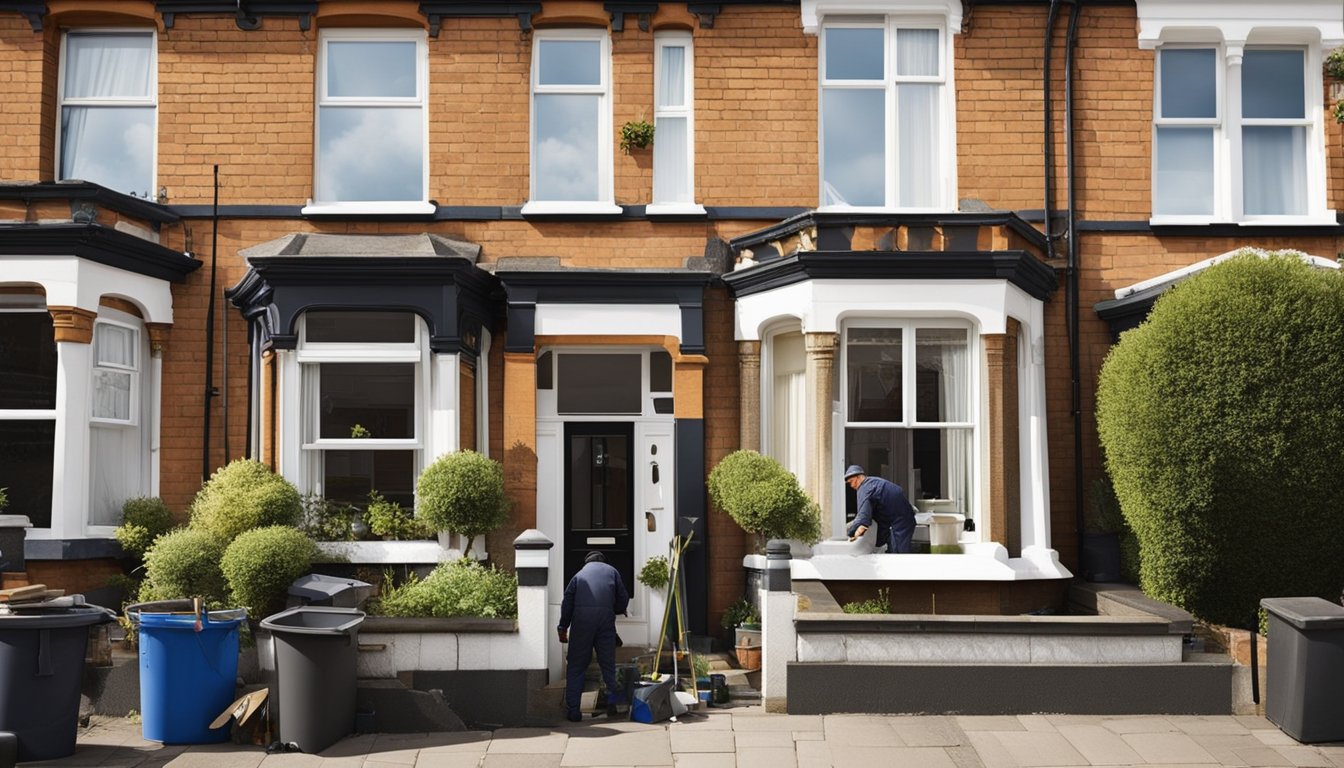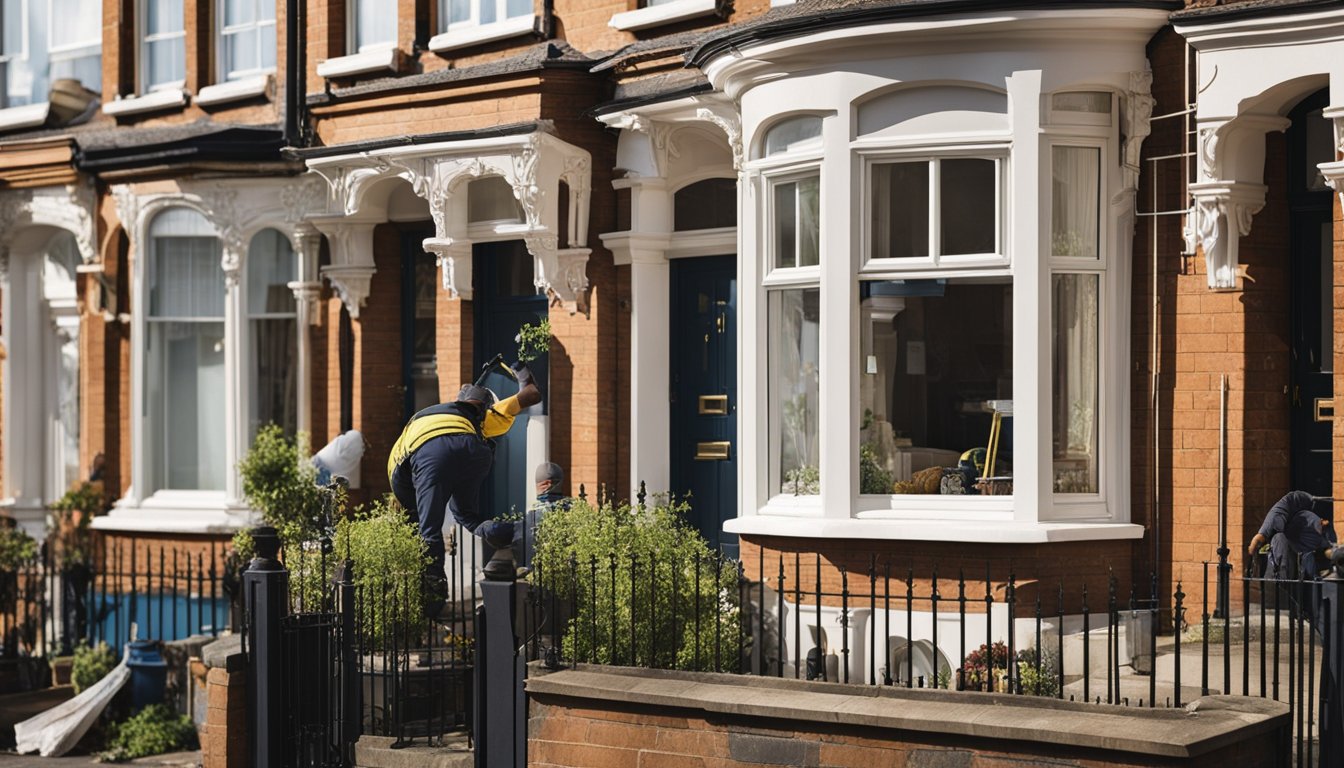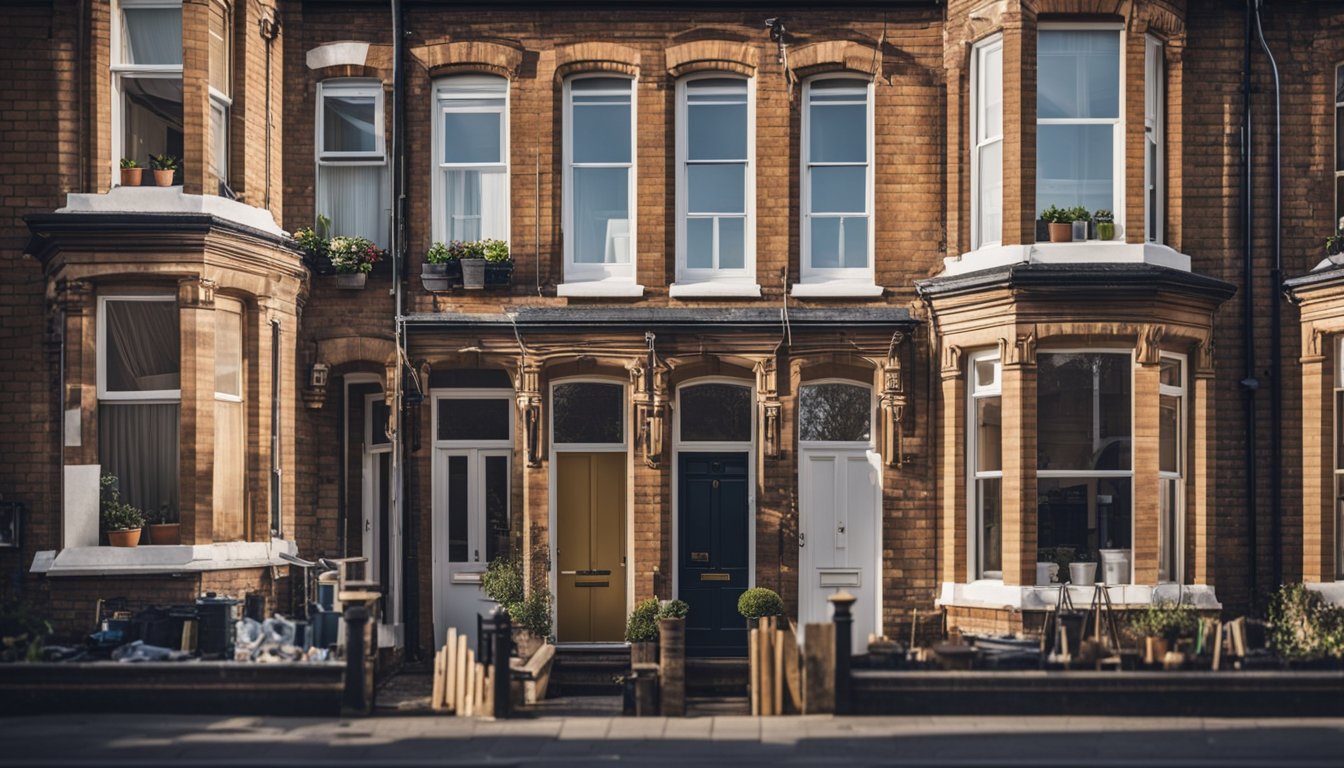Late updated: 14 Oct 2024 11:10
Written by: Daniel Harper
Effective Tips For Renovating Victorian Terraced Houses: A Comprehensive Guide
Embarking on the journey to renovate a Victorian terraced house can feel like stepping back in time while moving forward with modern craftsmanship. These homes, built with unique charm and historical significance, require a blend of respect for their origins and innovative updates to meet contemporary standards. To renovate a Victorian terrace effectively, it's essential to balance preserving its historical features and updating it for modern living with careful planning and expert advice.

Victorian houses, often found lining quaint streets with their identical facades, offer distinctive architectural details like plaster mouldings, original fireplaces, and intricate cornices. Retaining these features not only preserves the character but also enhances the home's value. Our objective is to guide you through the process of maintaining this elegance while incorporating modern amenities, making the renovation both practical and aesthetically pleasing.
By wisely planning renovation works, you can achieve a harmonious blend of old and new, ensuring the house remains structurally sound and visually captivating. Let's explore practical tips and strategies to successfully bring out the best in your Victorian terraced home renovation.
Key Takeaways
- Preserve original features for added character.
- Balance modern updates with historical charm.
- Plan renovations to ensure structural integrity.
Planning Your Victorian Terrace Renovation
Renovating a Victorian terraced house can be an exciting and rewarding project. To ensure success, it's critical to address planning permissions, manage project timelines, and develop a detailed renovation plan that respects the unique character of these historical properties.
Understanding Planning Permission and Building Regulations
When renovating, it is essential to understand how planning permission and building regulations apply. Many Victorian terraces are located in conservation areas, requiring permissions to maintain the historical integrity. Planning permission may be needed for changes affecting the exterior or major structural work.
Certain works may fall under permitted development, which allows for minor alterations without formal approval. Nevertheless, verifying what is permitted within your locality is crucial, as regulations differ. Additionally, satisfying building regulations is necessary for safety and compliance, covering areas like electrical works, insulation, and ventilation.
Essential Steps in Project Management
Effective project management is critical to a successful renovation. Firstly, we should establish clear goals and a realistic budget, taking both constraints and contingencies into account. Hiring a competent project manager or architect with experience in Victorian properties can navigate complex planning processes and unforeseen challenges.
Next, assembling a skilled team is important. It includes builders, electricians, and possibly specialist craftsmen to handle period features. We should prioritise clear communication among all parties, keeping the project aligned with our objectives.
Site visits, progress tracking, and regular updates help in maintaining schedules and mitigating risks. This structured approach reduces delays and ensures the project stays within budget.
Creating a Comprehensive Renovation Plan
A comprehensive renovation plan integrates every facet of the project to maintain an orderly progression. This plan should outline the scope of work, including details such as Design, Materials, and Timeline. Prioritising key areas like sustainable solutions, enhanced light, and use of space can also elevate the property's functionality.
This detailed planning helps prevent over-modernising and losing the home’s unique charm. We need to identify existing features worth preserving and any modern upgrades that add value. Consider phasing the project to address urgent issues like structural repairs or insulation first before focusing on aesthetic elements.
A meticulous renovation plan not only ensures that our vision is realised but also that our Victorian terrace retains its historical charm while meeting modern living standards.
Executing the Renovation Works

Renovating Victorian terraced houses involves blending old-world charm with contemporary functionality. Key elements include maintaining original features while modernising spaces for today’s lifestyle.
Respecting Original Features and Structural Changes
When working on Victorian terraced houses, preserving original features is paramount. Details like sash windows, cornices, and ceiling roses evoke the property's historical character. Original fireplaces and cast iron radiators are treasures worth conserving for their aesthetic and functional appeal.
We must assess structural elements cautiously. Ensuring the integrity of high ceilings and original supports is vital. If structural changes are necessary, they should respect the original design. Exposed brickwork can be both structural and decorative. It adds warmth and texture, preserving the building's unique essence.
Modernising with Extensions and Conversions
Modernising doesn’t mean disregarding history; it's about enhancing the property. Rear and side return extensions are popular, offering more space without compromising the garden. They can be used to create open-plan living areas, which are attractive for family gatherings.
Loft and basement conversions provide additional functional spaces, whether for bedrooms, offices, or utility rooms. These conversions must be handled with care to maintain the structural balance. Incorporating modern materials smoothly transitions new elements with existing ones. Careful planning ensures extensions complement rather than overshadow the original structure.
Finishing Touches: Flooring, Mouldings, and Skirting Boards
Finishing touches bring renovation projects to life. Choosing the right flooring is pivotal; reclaimed wood floors blend well with Victorian aesthetics, while modern alternatives provide durability. Mouldings and skirting boards should be consistent with the period style. They are often painted in subtle shades to highlight details without overpowering the room’s decor.
Balancing original features with new elements creates a cohesive look. Utilising period-appropriate mouldings ties everything together. Using high-quality, genuine materials enhances authenticity and adds lasting value to the property. It’s a nuanced task requiring a delicate balance of preservation and innovation.
Frequently Asked Questions

Renovating Victorian terraced houses involves maintaining original details while integrating modern comforts. Insulating these period homes can be achieved using a combination of traditional and innovative methods to enhance warmth and energy efficiency.
What are the key considerations when refurbishing a period Victorian home?
When refurbishing a period Victorian home, preserving original features such as ceiling roses, cornices, and fireplaces is crucial. It’s also essential to consider the historical significance and structural integrity of the property. Consulting with heritage renovation experts can provide valuable insights into balancing modern updates with traditional elements.
How can you modernise a Victorian terraced property while preserving its character?
Modernising a Victorian terraced property involves maintaining its distinctive architectural details like picture rails and wall panelling. We can introduce modern amenities discreetly, such as updating electrical and plumbing systems, installing energy-efficient windows that mimic original designs, and using sympathetic materials in any new additions.
What are cost-effective ways to increase the value of a Victorian terraced house?
To increase value, focus on maintaining or restoring original features as they significantly enhance charm and market appeal. Investing in a high-quality kitchen and bathroom refurbishment as well as improving outdoor spaces can also yield substantial returns. Painting and refreshing old features with a keen eye for period-appropriate colours and finishes can be affordable and effective.
What insulation options are available for enhancing the warmth of Victorian terraced homes?
Victorian homes can benefit from internal wall insulation, which preserves exterior facades. Roof and floor insulations are particularly effective due to their poor original thermal properties. Using draught-proofing measures around original windows and doors ensures comfort without compromising character.
What are innovative ideas for extending a Victorian terraced house to maximise space?
Extending vertically, such as converting loft spaces, can add significant utility and value. Rear extensions respecting original features and boundary limits can also provide additional living space. Glass extensions serve as a modern contrast while allowing natural light to flood interior spaces.
How should one approach a Victorian house renovation project to ensure a balance of old and new?
Balancing old and new requires careful planning. We should focus on seamless transitions between original sections and modern additions. Using compatible materials and maintaining consistency in design helps unify spaces. Collaboration with architects specialising in period properties can guide design choices that respect both aesthetics and functionality.
